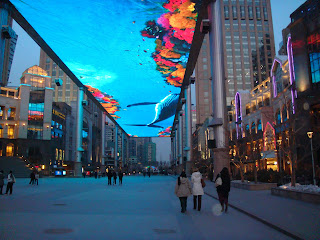

 Ian hasn't seen his sister Judy for over nine years. We've been looking forward to Judy and her daughter Candice coming over from Capetown to stay. It has, of course, been a great reunion for Ian, Candice and Judy and it has been a great surprise to me to find that meeting Judy feels like meeting a sister. Apart from the obvious things like no beard and having lots of hair, she is just like a feminine version of Ian. Enjoying getting to know each other would be an understatement.
Ian hasn't seen his sister Judy for over nine years. We've been looking forward to Judy and her daughter Candice coming over from Capetown to stay. It has, of course, been a great reunion for Ian, Candice and Judy and it has been a great surprise to me to find that meeting Judy feels like meeting a sister. Apart from the obvious things like no beard and having lots of hair, she is just like a feminine version of Ian. Enjoying getting to know each other would be an understatement. It has been more fun because it has snowed, really snowed in the time they have been here. We've walked through falling snowflakes, thrown snowballs and explored Beijing coated in an icy coat.
It has been more fun because it has snowed, really snowed in the time they have been here. We've walked through falling snowflakes, thrown snowballs and explored Beijing coated in an icy coat. We have explored a hutong by pedicab, which again included a cup of tea at one of the locals' places, a wonderful retired woman who has lived for over 50 years in her family home with the same neighbours all that time. Judy left her gloves behind and we decided not to go back or say anything, when the tour guide called, "Who left their gloves behind"? Someone had found them and then rushed after the group to give them back.
We have explored a hutong by pedicab, which again included a cup of tea at one of the locals' places, a wonderful retired woman who has lived for over 50 years in her family home with the same neighbours all that time. Judy left her gloves behind and we decided not to go back or say anything, when the tour guide called, "Who left their gloves behind"? Someone had found them and then rushed after the group to give them back.


We explored a Buddhist temple in the snow, have been to the Shaolin Monks performing "Chun Yi - The Legend of Kungfu" which has just got back from a North American tour, have had numerous meals out and had the odd cocktail or two. Judy's been to my Chinese lesson with me, been to a friend's dinner party and been to the Beijing International Newcomers Network meeting where all the newbies in town meet to network and make friends. Here's us walking under the 80 metre television scrren at The Place.














 Clare, Ian and I went to Longqing Gorge about an hour and a half north of Beijing and just north of Badaling, one of the popular sections of the Great Wall. Longqing Gorge is a dam, but in winter it is
Clare, Ian and I went to Longqing Gorge about an hour and a half north of Beijing and just north of Badaling, one of the popular sections of the Great Wall. Longqing Gorge is a dam, but in winter it is 





